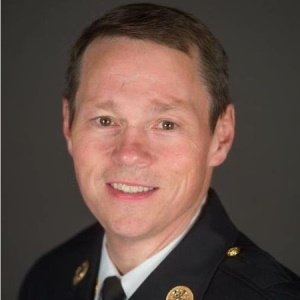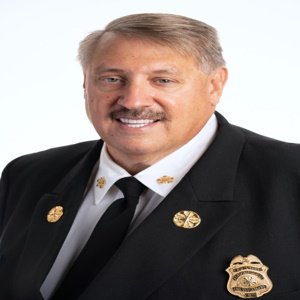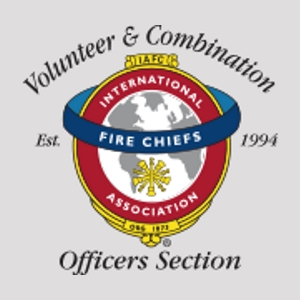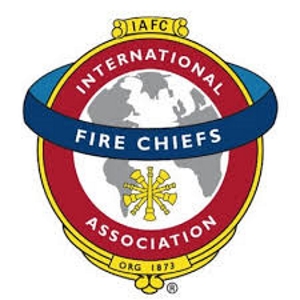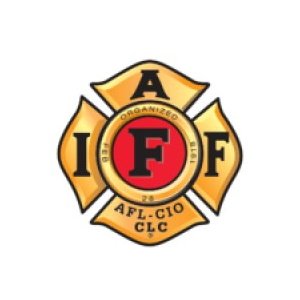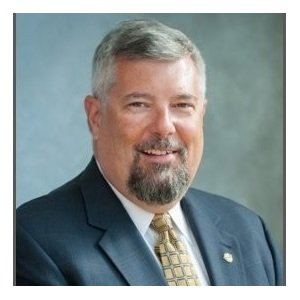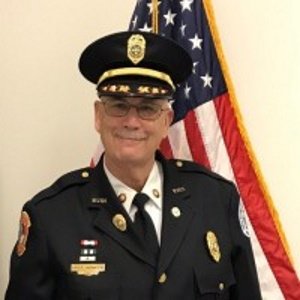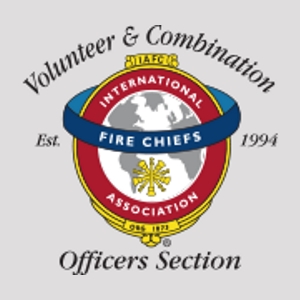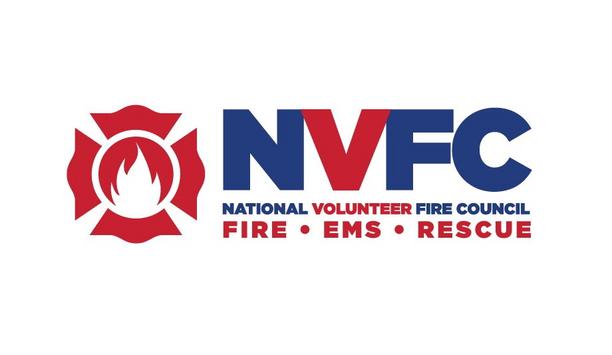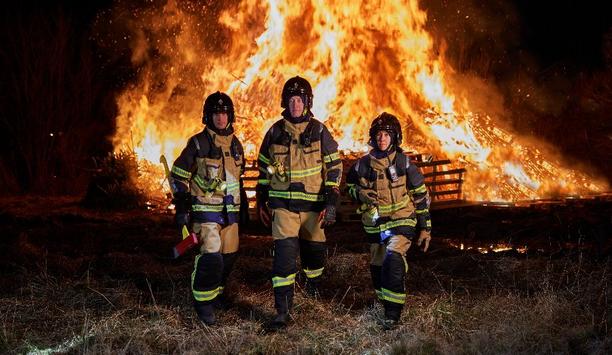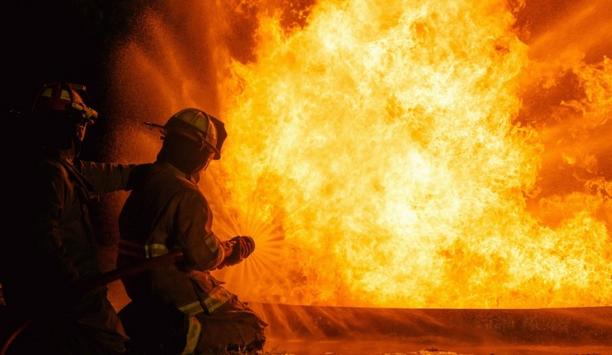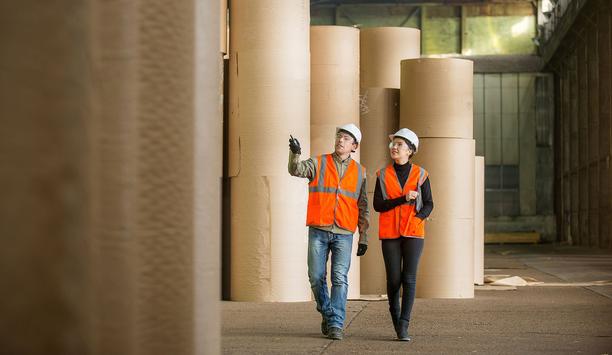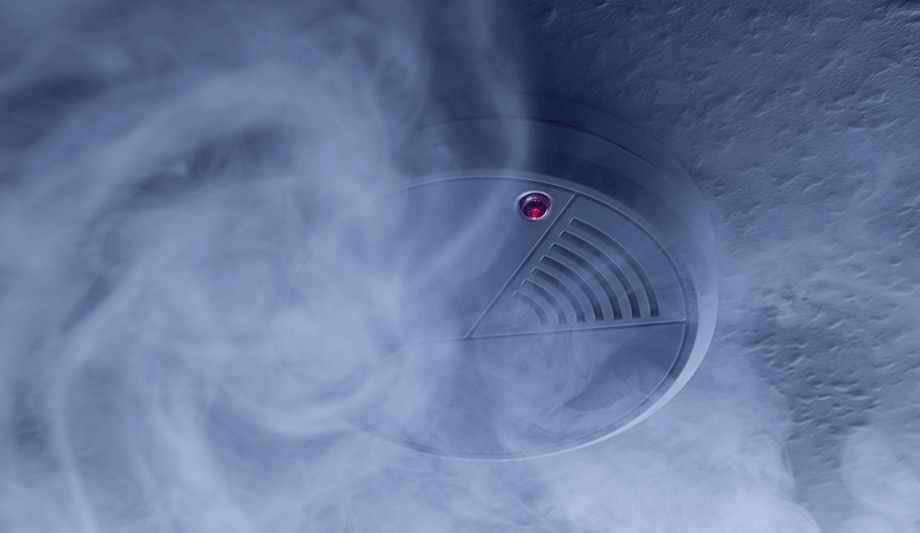International Association of Fire Chiefs (IAFC) - Experts & Thought Leaders
Latest International Association of Fire Chiefs (IAFC) news & announcements
Pierce Manufacturing Inc., an Oshkosh Corporation business, in partnership with the International Association of Fire Chiefs (IAFC), is pleased to announce the 2024 IAFC Fire Chief of the Year honorees. Volunteer Fire Chief C. Reid Vaughan of the Cuba Fire Department in Alabama and Career Fire Chief Randy Royal of the Colorado Springs Fire Department in Colorado have been named this year’s recipients. Since 1996, the IAFC has annually recognized one volunteer and one career fire chief for their outstanding service. A specially selected committee evaluates nominations, focusing on individuals who have made significant contributions in leadership, innovation, professional development, integrity, and public service. The 2024 IAFC Fire Chief of the Year awards were presented at the Fire-Rescue International (FRI) event in Dallas, Texas. Mentors for future generations “We are privileged to acknowledge the dedication and commitment of these exceptional fire service pioneers,” stated Bob Schulz, president of Pierce Manufacturing. “Chief Vaughan and Chief Royal exemplify true leadership and are vital pillars within their communities, serving as mentors for future generations. Pierce Manufacturing is honored to recognize their significant contributions.” Chief C. Reid Vaughan Volunteer Fire Chief Honoree – C. Reid Vaughan, Cuba Fire Department (Alabama). Chief C. Reid Vaughan has been a lifelong member of his community in Cuba, Alabama Chief C. Reid Vaughan has been a lifelong member of his community in Cuba, Alabama. Serving as the Volunteer Fire Chief since 1994, Chief Vaughan has demonstrated unwavering dedication and leadership. Alongside his role at the fire department, he serves as the Section Chief over Regional Services at the Alabama Fire College. His educational background includes a bachelor’s degree in history with a minor in music, as well as a graduate degree in school administration and history. Chief Vaughan’s commitment extends beyond firefighting; he has served as the Minister of Music for several churches for the past 30 years and as Principal of Sumter Academy High School for 11 years. He also serves as the National Volunteer Fire Council Director for Alabama and the fire service representative to FirstNet. Chief Vaughan’s exceptional character and dedication to service were recognized when he was awarded the Alabama Association of Fire Chief’s Volunteer Fire Chief of the Year. His relentless service to the community epitomizes true leadership and commitment. Randy Royal Career Fire Chief Honoree – Randy Royal, Colorado Springs Fire Department (Colorado) The CSFD earned its third consecutive accreditation status from CFAI and added fire stations Chief Randy Royal's career is defined by his authentic investment in people and his strategic vision. Since joining the Colorado Springs Fire Department (CSFD) in 1987, he has consistently demonstrated his "mission first, people always" ethos. Under his leadership, the CSFD earned its third consecutive accreditation status from the Commission on Fire Accreditation International (CFAI) and added new fire stations, personnel, and resources. Chief Royal’s initiatives include the development of a Tiered Response EMS model, dedicated staffing for the Hazardous Materials Response Team, and community outreach programs such as wildfire preparedness and evacuation planning. His commitment to firefighter safety, health, and wellness is evident through the establishment of the Colorado Firefighter Benefits Trust and various wellness programs. New EMS documentation systems During the COVID-19 pandemic, Chief Royal led the CSFD through unprecedented challenges, demonstrating resilience and innovative problem-solving. His efforts in labor-management relations have resulted in collaborative solutions and improved working conditions. Chief Royal’s leadership extends to technology and training advancements, including the adoption of new EMS documentation systems, regional training programs, and enhanced apparatus and equipment for the fire department. With a career spanning nearly four decades, Chief Royal has received numerous accolades, including the Colorado Division of Fire Prevention & Control's Fire Chief of the Year and the Congressional Fire Services Institute's Excellence in Fire Service-Based EMS Award. With numerous achievements, Chiefs C. Reid Vaughan and Randy Royal exemplify outstanding leadership. Their dedication, vision, and unwavering commitment to their fire departments and the communities they serve make them deserving recipients of the 2024 IAFC Fire Chief of the Year award.
The National Volunteer Fire Council (NVFC) is pleased to announce the winners of its annual fire service achievement awards, which recognize fire service volunteers who have gone above and beyond in service to their department and community. The 2024 recipients are Stephen Austin, Lifetime Achievement Award, sponsored by Lincoln Financial Group; Chief John Swan Sr., Chief James P. Seavey Sr. Health & Wellness Leadership Award, co-sponsored by VFIS and Ward Diesel Filter Systems; Joseph Valentino, Junior Firefighter of the Year, sponsored by California Casualty; and Inver Grove Heights Fire Department Explorer Program, Junior Firefighter Program of the Year, sponsored by California Casualty. NVFC spring meeting Inver Grove Heights Fire Department Explorer Program will be honored during a local ceremony “We are honored to recognize members of the volunteer fire service and junior fire service each year for the amazing contributions they make to their departments and communities,” said NVFC chair Steve Hirsch. “This year’s award winners showcase the many ways our nation’s volunteers give back, help their neighbors, and make their communities and departments safer, stronger, and better prepared.” Austin, Swan, and Valentino will be recognized at an awards ceremony taking place during the NVFC spring meeting on April 26 in Arlington, VA. The Inver Grove Heights Fire Department Explorer Program will be honored during a local ceremony to enable all of its members to attend. Impacting first responders Lifetime Achievement Award: Stephen Austin (DE) Award sponsored by Lincoln Financial Group - Like many others, Steve Austin joined his local volunteer fire company on the encouragement of friends. His journey began with the Rouss Fire Company in Winchester, VA, in 1963. Captivated by the fire service's history, Austin embarked on a mission to contribute to it. Six decades later, he has expanded his local circle into a national network and is a highly recognized and influential figure in the American fire service. He served in four states as an active volunteer and is currently serving with the Aetna Hose, Hook, and Ladder Company in Newark, DE, and the Allison Hook and Ladder Company in Harrisburg, PA. Austin has been a staunch advocate at the local, state, and national levels for numerous critical issues impacting first responders. Promoting safe operations This includes championing and garnering support for key fire service legislation, including the establishment of the Assistance to Firefighters Grant and Staffing for Adequate Fire and Emergency Response grant programs, and serving in leadership roles with the Congressional Fire Services Institute, International Association of Arson Investigators, and Cumberland Valley Volunteer Firemen’s Association (CVVFA). He was the first chair of the NFPA committees for 1033: Standard for Professional Qualifications for Fire Investigators and 1091: Standard for Traffic Control Incident Management Professional Qualifications. Austin’s creation, advocacy, and tireless duty will continue to benefit current and future firefighters Austin is a founding member of the CVVFA’s Emergency Responder Safety Institute and has dedicated significant efforts to promoting safe operations on roadways for the fire service, law enforcement, and other responder groups. He is past president of the Delaware Volunteer Firefighter's Association (DVFA), founding chair of the DVFA Foundation, and was the first chair of the board of directors for the First Responder Center for Excellence. His contributions to the fire service have garnered him many awards and recognitions, including being inducted into both the Firehouse Magazine Hall of Fame and the National Fire Heritage Hall of Legacies, Legends, and Leaders. There is no doubt that Austin’s hard work, innovation, advocacy, and unwavering commitment will continue to benefit current and future firefighters across the nation. Raising awareness among firefighters Chief James P. Seavey Sr. Health & Wellness Leadership Award: Chief John Swan Sr. (IL) Award Co-sponsored by VFIS and Ward Diesel Filter Systems - After reading the Lavender Ribbon Report put out by the NVFC and International Association of Fire Chiefs’ Volunteer and Combination Officers Section, Chief John Swan Sr. of the Colona (IL) Fire Department wanted to do more to raise awareness among firefighters about cancer risks and put into practice actions that would reduce those risks. He decided to start by focusing on immediate, on-scene, gross decontamination, knowing it would be an easy-to-implement, low-cost intervention with huge benefits. He named the program “Go Green Clean” and began to use green cattle ear tags in his station to identify clean gear. The tags were removed when headed to a fire, and the gear would not be used again until it was cleaned and had a tag back on it. Seeing the success the Go Green Clean program had in improving firefighter safety, Swan, who was president of the Illinois Firefighters Association (IFA), decided to pitch the idea to the organization. They saw the potential, and the Go Green Clean Initiative was born with the mission to develop and promote a health intervention program to reduce the risks of firefighter cancer at the local, state, and national levels. Swan worked with Alexis Fire Equipment to secure a donated, working 1994 HME fire engine Go Green Clean Initiative Inspired by the “Pink Heals” trucks and their impact on cancer awareness, Swan worked with Alexis Fire Equipment to secure a donated, working 1994 HME fire engine. Using donated funds, the engine was polished and wrapped in neon green with graphics promoting the Go Green Clean Initiative. It was then outfitted with television screens to show videos about cancer prevention. The Illinois State Fire Marshal donated buckets, soap, scrub brushes, and hoses to hand out from the truck to stations across the state. Visitors are also encouraged to sign up for the National Firefighter Registry for Cancer and are given cancer risk reduction posters to take back to their departments. Since hitting the road in 2022, the truck has visited over 40 towns and distributed over 94 free decontamination kits. It has gone to conferences and the state fair, reaching over 100,000 people. The Go Green Clean Initiative is committed to supplying the necessary information, training, and decontamination equipment to all firefighters. Led by Swan and his dedication to firefighters, the IFA’s long-term goal is to have a fleet of trucks traveling nationwide. Volunteer fire service Junior Firefighter of the Year: Joseph Valentino (NJ) Award sponsored by California Casualty - A proud third-generation member of the volunteer fire service, Joseph Valentino has distinguished himself in his community as a junior firefighter with the Independent Fire Engine & Truck Co. No. 2 of the City of Long Branch (NJ) Fire Department (LBFD) and with the Oakhurst Independent Hose Co. No. 1 of the Oakhurst Fire Department in Township of Ocean Fire District No. 1 (NJ). Valentino’s multifaceted involvement across various disciplines showcases a remarkable spirit of youth community involvement. While Valentino is committed to both fire departments, the LBFD holds special significance for him. For his Eagle Scout Service Project, he played a pivotal role in a volunteer recruitment drive for the LBFD, orchestrating a campaign involving door-to-door canvasing, social media interactions, city-wide parades and community events, and appeals at community organizations. Multiple service and leadership roles The initiative utilized resources from the NVFC’s Make Me A Firefighter campaign and ultimately reached 35,000 residents. The drive resulted in a 25 percent increase in the LBFD’s active volunteer firefighting force. In recognition of Valentino’s efforts, LBFD awarded him the Robert “Bullet” Feeney Medal and his recruitment drive has been named the Glenn A. and Melinda W. Adams National Eagle Scout Service Project of the Year. Valentino’s multifaceted involvement across various disciplines showcases a remarkable spirit Valentino is constantly demonstrating his commitment to community service, from his extensive participation in the Boy Scouts of America and its honor society, the Order of the Arrow, to engagement in his church community, to multiple service and leadership roles at school, including membership in the National Honor Society. This extensive involvement reflects his empathy, care, and genuine desire to contribute positively to both his immediate and extended communities. In pursuing these varied interests and such a high level of achievement, Valentino has not just overcome personal challenges, but he has used those challenges to fuel a passion that strengthens and enriches the communities he serves. His journey demonstrates his extraordinary commitment to the values of the fire service and the difference that he can make on the well-being of the community at large. Longest-running Explorer programs Junior Firefighter Program of the Year: Inver Grove Heights Fire Department Explorer Program (MN) Award sponsored by California Casualty - The Inver Grove Heights Fire Department (IGHFD) had one of the longest-running Explorer programs in Minnesota before COVID. To bring it back, Deputy Chief Eric Bergum and Lieutenant Dan Bernardy worked with a local high school to create a joint Explorer program for high school students. Five students joined this new program, meeting every other week at the fire station, even throughout the summer. The goal is to get students excited about firefighting as Explorers in grades 9-10 Bergum and Bernardy then approached the high school about adding a Cadet Pathways Program for students in grades 11-12. The school agreed, and the program was born. The program is a step beyond Explorers, allowing high school students to receive certifiable/transferable training and direction toward a career in firefighting. The goal is to get students excited about firefighting as Explorers in grades 9-10, and those interested in learning more can move on to become a cadet. Six high school students are currently participating in the cadet program; three started in the Explorer program and are continuing with both. Next generation of firefighters Once a week, students in the Cadet Pathways Program leave school to attend the Northern Dakota Training Academy (NDTA) for morning classes covering Firefighter 1-2 and HazMat Ops. Bergum is also working with a local college to create a Postsecondary Enrollment Options (PSEO) pathways program for the cadets. The program would provide 10 free college credits for the NDTA fire classes. Those classes, combined with the high school’s emergency medical technician training, will give students a path to volunteer, part-time, or full-time careers in firefighting upon graduation. With many departments struggling to attract new firefighters, the programs offered by the IGHFD are invigorating interest in emergency services among young people who will go on to be the next generation of firefighters. Students can graduate from high school with a solid career path, training, and certifications, giving fire departments a boost in their recruitment pools. If cadets choose to become career firefighters, they will still be encouraged to join a non-career department while finishing their college degrees or waiting to get hired. The positive and long-lasting impact these programs will have on the future of the fire service is clear.
Pierce Manufacturing Inc., an Oshkosh Corporation company, in partnership with the International Association of Fire Chiefs (IAFC), announced the 2023 IAFC Fire Chief of the Year honorees. Volunteer Fire Chief Thomas Bell of the Greensburg Volunteer Fire Department in Pennsylvania, and Career Fire Chief Brian Fennessy of the Orange County Fire Authority (OCFA) in California, have been named 2023’s recipients. IAFC Fire Chief of the Year Annually since 1996, the IAFC has honored both a volunteer and a career fire chief. Nominations for these awards are evaluated by a committee selected by the IAFC, focusing on chiefs who have notably contributed in areas of leadership, innovation, professional growth, integrity, and public service. The IAFC Fire Chief of the Year accolades were announced at the Fire-Rescue International (FRI) event in Kansas City, Missouri, on August 16. Recognition Chief Fennessy and Chief Bell are not just fire service professionals; they are community pillars and mentors" “We are honored to celebrate the commitment and dedication of these outstanding fire service pioneers,” said Bob Schulz, president of Pierce Manufacturing. “Chief Fennessy and Chief Bell are not just fire service professionals; they are community pillars and mentors for future generations. Pierce Manufacturing is proud to recognize their invaluable contributions.” Volunteer Fire Chief Honoree Thomas Bell, Greensburg Volunteer Fire Department (Pennsylvania) With over 30 years of dedicated fire service, Chief Thomas Bell is a hardworking and result-driven pioneer. Starting his journey as a junior firefighter and climbing through the ranks, Chief Bell took the helm during a pivotal period in the Greensburg Volunteer Fire Department’s history. Under his leadership, the department transformed, emphasizing the importance of teamwork, skill, and core values. Leadership style He focused on developing and delivering comprehensive firefighter training Chief Bell's leadership style ushered in an era of reform, prioritizing the right skill sets for fire and rescue operations. Recognizing the need for change, he focused on developing and delivering comprehensive firefighter training, facilitating transparent after-action reviews, and cultivating a culture of continuous improvement. Hallmark Initiatives One of his hallmark initiatives was the implementation of the 'Dignity Statement' policy, emphasizing mutual respect and intolerance for harassment and bullying. This policy, coupled with mandatory training, not only reinforced the department's core values but also resonated with the broader community. notable accomplishments Other notable accomplishments include: 1) Revitalized the Junior Firefighter Program, leading to exponential growth in program participation with young participants actively learning fire safety skills and inclusion of participants’ families, which fostered a renewed passion for service among older firefighters 2) Implemented various community and operational programs to enhance excellence, including: Red X Program is designed to let firefighters know a building has significant structural or interior hazards. Introduction of rotating nightly Command Officer shifts with skilled officers. Developed mandatory post-fire bunker gear laundry services for all responding firefighters. Mandatory radio command and protocol training, with hands-on skill set demonstrations. Officer training in sectoring practices, the use of 'CAN’ reports with interior firefighters, and command benchmarking. Career Fire Chief Honoree Brian Fennessy, Orange County Fire Authority (California) Fennessy’s contributions span diverse areas such as incident response, firefighter exposure For nearly half a century, Chief Brian Fennessy has been a pioneer in fire service innovation. From his early days as a helitack captain and crew superintendent for the U.S. Forest Service to his esteemed roles as fire chief for the San Diego Fire-Rescue Department and, in the past five years, as chief for the OCFA, his impact has been profound. Fennessy’s contributions span diverse areas such as incident response, firefighter exposure, mental and behavioral health, diversity, equity, inclusion, and grant activity. Visionary projects He recently secured substantial funding for projects like the Wildland Hand Crew Station and vegetation management initiatives. But one of his visionary projects, the Fire Integrated Real-Time Intelligence System (FIRIS), exemplifies his forward-thinking approach. Conceived in 2017, FIRIS is a public-private partnership involving top-tier experts from various fields. The success of FIRIS is evident from the $30 million state funding it received last year, positioning it as a pivotal tool for wildfire intelligence in California. notable accomplishments Other notable accomplishments include: 1) Pioneered the Quick Reaction Force (QRF) in partnership with Southern California Edison. 2) QRF had 50 fire incidents in its first year and made more than 2,200 drops, using almost 3 million gallons of water and retardant. 3) Introduced numerous initiatives at the OCFA under his leadership, including: Hiring roles emphasizing diversity and behavioral health. Establishment of the annual Girls Empowerment Camp. Frontline service enhancements. 4) Recognized as Fire Chief of the Year by the California Fire Chiefs Association. 5) Named one of the nation’s "Top 25 Doers, Dreamers, and Drivers" by Government Technology magazine. dedication, vision With countless accomplishments, Chiefs Thomas Bell and Brian Fennessy stand out as exemplary pioneers. Their dedication, vision, and unwavering commitment to the fire departments and communities in which they serve make them deserving recipients of the 2023 IAFC Fire Chief of the Year award.
Insights & Opinions from thought leaders at International Association of Fire Chiefs (IAFC)
Two grant programs designed to address staffing, equipment, training, and health and safety needs of firefighters are scheduled to ‘sunset’ in 2024 unless Congress reauthorizes the grant programs, and funding for the programs will run out unless Congress endows them for another year. Legislation to extend the programs has already passed the U.S. Senate. The Staffing for Adequate Fire and Emergency Response (SAFER) grant program provides funding to hire additional personnel to maintain safe staffing levels in fire departments. The Assistance to Firefighters Grant (AFG) program pays for equipment, training and other fire department needs. Together, they ensure the readiness of 30,000 fire departments across the U.S. to respond to more than 30 million emergency calls annually. Introducing bipartisan legislation U.S. Senator Gary Peters, Chairman of the Homeland Security and Governmental Affairs Committee, introduced bipartisan legislation to reauthorize SAFER and AFG programs, and to provide funding for the United States Fire Administration (USFA). Other authors of the bipartisan legislation are Republican Senators Susan Collins of Maine and Lisa Murkowski of Alaska; and Democratic Senator Tom Carper of Delaware in addition to Democrat Peters. The bill was approved by the Senate Homeland Security Committee and then moved to the full Senate Current authorization of funding for all three programs expires in 2023. The bill was approved by the Senate Homeland Security Committee and then moved to the full Senate for consideration. The Senate approved the bill on April 20. Senate Majority Leader Chuck Schumer earlier pledged to pass the Fire Grants and Safety Act of 2023 in the Senate to save the programs. In addition to reauthorizing the programs for another year, the bill extends the sunset from 2024 to 2030. Federal grant programs The bill also extends through 2030 the underlying formula for the authorizations of appropriations for the grant programs; those amounts are calculated by adjusting the amount authorized for 2013 ($750 million) each year to account for inflation. In November 2022, Michigan Congressman Dan Kildee announced legislation in the House to renew the two federal grant programs critical to local departments. The Fire Grant and Safety Act would extend the grants until 2030. The Department of Homeland Security (DHS) Federal Emergency Management Agency (FEMA) is responsible for the implementation and administration of the grant programs through the Grant Programs Directorate. Modern pumper truck Outfitting one firefighter with protective gear and breathing apparatus can cost $12,000 “These federal grant programs have delivered millions of dollars to departments and municipalities to [provide] the equipment and staffing levels [needed] to respond to fires and countless other emergency calls as safely and efficiently as possible,” said Sam Fresina, President of the New York State Professional Firefighters Association. Fire departments often face budget shortfalls and high costs that prevent them from investing in modern equipment to combat emergencies and keep firefighters safe. For example, a modern pumper truck can cost more than $750,000. Outfitting one firefighter with protective gear and breathing apparatus can cost $12,000. Providing recruitment incentives “Volunteer and combination fire and EMS departments struggle to get the funding they need to keep the lights on, fuel the ambulance, and purchase turnout gear,” said National Volunteer Fire Council Chair Steve Hirsch. “The AFG and SAFER programs are critical to these departments because they allow them to purchase needed equipment and provide recruitment incentives to volunteers to serve their community.” Other organizations supporting reauthorization of the grant programs and extension of the ‘sunset’ include the International Association of Fire Chiefs (IAFC), the Congressional Fire Services Institute (CFSI), the National Fallen Firefighters Foundation, the International Society of Fire Service Instructors, the International Association of Fire Fighters (IAFF), and the National Fire Protection Association (NFPA).
Among the ways, garments protect firefighters is by reducing the heat stress and discomfort created by the need to carry heavy gear. Making the garments more comfortable to wear means less physical stress. Garments also help to protect firefighters from the toxic elements in the fire environment. The extent to which plastic materials can generate toxic smoke when they burn has previously been ignored but is now better understood. Concerted effort to understand end user As a manufacturer of fibers used in firefighting garments, DuPont makes a concerted effort to understand the end user of their products; that is, the firefighter. They seek to keep the firefighter safer and to extend the time available to do his or her job safely. DuPont works with fabric and garment manufacturers to focus on minimizing the impact of the toxic environment. Firefighter’s awareness Multiple initiatives seek to make firefighters more aware of potential dangers and best practices Awareness by firefighters of the negative impact of toxic materials has increased substantially. Multiple initiatives seek to make firefighters more aware of potential dangers and best practices to avoid exposure to contamination. Organizations promoting greater awareness include firefighters’ unions, the International Association of Fire Chiefs (IAFC), and the National Fallen Firefighters Association. Toxic smoke For example, testing confirms that toxic smoke often affects firefighters in the neck and jaw area, where sweat promotes absorption of smoke particles. A woven hood or baklava avoids the absorption, reflected in the NFPA Standard 1971, which makes particulate protection hoods mandatory. The Nomex Nano Flex hood increases the comfort of the gear. Avoiding toxic materials also includes no inclusion of per-and poly-fluoroalkyl substances (PFAs) in garment materials themselves. Standards and Specifications Testing is an area of focus for DuPont, which has the capabilities to test the layered structures firefighters are wearing. One tool is the Thermo-Man, a fully instrumented mannequin that tests the likely burn injuries of flash-over fires. DuPont works with the NFPA, ISO, EN, and other standards committees to develop testing and certified standards to ensure the performance of firefighter garments. Fire gear is specified in each region according to a standard (minimum) performance. In many cases, garments out-perform the requirements. Other variables Other variables of firefighting garments include the fitting and weight Other variables of firefighting garments include the fitting and weight. A less expensive approach might yield a garment that sacrifices comfort. Geographic and climate differences matter, too. A firefighter in the North would prefer a different garment than in the South. Garments should be comfortable, lighter, and warmer in cold environments. On the topic of gender, garment makers offer female designs that are cut and shaped differently. Garment makers evaluate the weight of the assembly, how well it protects against the heat, and the comfort. DuPont works with garment makers to test various materials and how they perform in fire garments. The company works with firefighter consultants in the U.S. and Europe who help them understand the language of firefighters. Addressing Dangers of Toxic Materials Cleaning fire gear of toxic materials is a challenge related to garments. Toxic materials on fire gear returned to the fire station can also expose the station environment to danger. Changing logistics and processes are driving how gear is handled in the fire station environments. Some stations are designating black zones, gray zones, and white zones, depending on the level of contamination of the gear in those areas. Washing and drying More frequent washing of bulky, heavy gear helps to circumvent the impact of toxic materials, but repeated washing and drying can cause mechanical stress and resulting damage to a garment. DuPont collaborates with weaving mills and garment makers to develop fabrics and garments that stand up well to frequent washing.Toxic smoke particles and mandatory use of hoods on firefighters is translating into more washing. As time goes on, the washing and decontamination process will likely become more professionalized with laundry companies stepping in to wash and handle the garments. Fire stations are not well suited to cleaning these garments. Nomex Nano fiber Nomex Nano Flex is a non-woven material that retains toxic and cancer-causing particles Developed to address the growing problem of heat stress, DuPont’s Nomex Nano fiber is engineered to be thinner than other advanced flame-resistant materials. Nomex Nano Flex was developed to help make products like firefighter hoods more protective against particles without compromising comfort. Nomex Nano Flex is a non-woven material that retains toxic and cancer-causing particles, and creates a particulate barrier. It also protects the firefighter from outside heat while cooling the firefighter by evacuating body heat. Higher evaporation rate Nomex Nano Flex has a higher evaporation rate. For the same thermal protection performance (TPP), it also has higher total heat loss (THL). Combining protection, thermal performance and toughness, Nomex Xtreme Performance is the highest performance category of solutions for flame-resistant personal protective apparel. Feedback from Firefighters “If we have a new innovation, or want to share our developments, we go proactively to fire departments to ask: Will this help you or not?” says Alfons N. Held, Global Market Leader, Emergency Response, DuPont Personal Protection. There is a difference between lab testing and what firefighters experience in the real world. Alfons N. Held adds, “We seek to understand what they need, and approach ‘lighthouse’ fire departments for guidance.” In any country or jurisdiction, there are fire departments – ‘lighthouse’ departments – that set the trends and work to evaluate the gear. If someone in Florida is using certain gear, it might also work in Texas or Arizona. The protection level Areas of continuing research in terms of firefighter garments include making them more wash-durable The question is: What protection level do we need? Given that level, departments seek to balance comfort with performance. Ironically, of the firefighters who die every year, some two-thirds of the deaths are attributable to overexertion, while less than 10% is linked to the fire/heat. Areas of continuing research in terms of firefighter garments include making them more wash-durable, more comfortable (with higher evaporation) and more lightweight. Complex systems Garments can be complex systems; heavy turnout gear is a five-layer garment with each layer contributing to performance – the outer shell, the inner liner, a moisture membrane, and one or two thermal liners. Sometimes attention is more focused on the outer layer of the gear with less awareness of the other layers and how the entire system works together. Importance of station wear In fact, protection of the firefighter starts at the skin, so station wear is important. “In our view, looking at all the layers on the skin and outwards is important,” says Alfons N. Held, adding “Firefighters wear various materials that are not always optimal.” For example, a cotton undergarment might get wet from sweat, stay wet and not evaporate. Environmental impact is another concern among garment-makers. Can the materials be reused or recycled? Some countries in Europe ask that manufacturers take back garments after they are used. New Garments, New Needs A special need is development of new garments that can perform at the wildland urban interface (WUI), where catastrophic wildland fires encroach on residential areas. Design of gear for wildland firefighting has been lighter and does not include breathing systems. When fires reach residential areas, gear needs change. Wildland firefighters are not equipped to enter a structure fire and do not have adequate protection against carcinogens. New gear designs are needed that address both environments.
Wildfires represent extreme instances of the deadly destructiveness of fire. There seem to be more wildfires every year, and there are certainly larger and more deadly wildfires all over the world than ever before. Wildfires dominate the public perception of the most extreme consequences of fire. This look back at 2020 will highlight some of the articles about wildfires published by TheBigRedGuide.com, with links to the full-length original articles. The wildfire season in 11 Western U.S. states started out slower than last year. In the first half of the season, wildfires in the Arctic reached new levels, especially in Alaska and Siberia. Larger fires burning Wildfires in the West killed 160 people and caused $40 billion in damage in the past two years, according to the National Centers for Environmental Information. The trend is toward larger fires burning more acres – especially in years that are warm. Early in 2020, Australia was the epicenter of a wildfire disaster. Persistent heat and drought exacerbated the wildfires, and there have been fires in every Australian state, although New South Wales has been hardest hit. Strong winds have spread smoke and fire rapidly and led to fatalities. Big cities like Melbourne and Sydney have been affected; large fires have damaged homes in the outer suburbs and smoke has destroyed air quality in urban areas. Whole towns have been engulfed in flames. Active wildfire season Another cause of recent wildfires was lightning with more than 10,000 lightning strikes sparking 376 fires In the context of wildfires, even seemingly minor events can have a very large impact. For example, an explosion of blue-colored smoke on Sept. 5, 2020, in Yucalpa, California, was the beginning of a large wildfire in El Dorado Ranch Park. The pyrotechnic device was essentially a smoke bomb designed to send plumes of pink or blue smoke rising into the air, designating the gender of an expected baby. Another cause of recent wildfires was lightning with more than 10,000 lightning strikes sparking 376 fires on Aug 16 and 17, 2020. The global pandemic presented complications for firefighters during what will the active wildfire season. Firefighting manpower could be diminished by the pandemic; training sessions have been canceled, postponed, or conducted remotely. And travel risks undermine the traditional approach of calling on firefighters from throughout the country or around the world to help fight the wildfires. Addressing forest management Social distancing is at odds with the teamwork and camaraderie that characterize firefighting units. Communal basecamps where everyone eats and sleeps together are unworkable during the pandemic. Instead, smaller camps are the rule, and packaged meals are delivered to each camp. Smaller teams reduce the need for widespread quarantine if someone tests positive for the novel coronavirus. Drones are a tool to address forest management and wildfire prevention. Drones are finding multiple uses when it comes to fighting and preventing wildfires. One application is to drop self-igniting ‘dragon eggs’ that spark smaller fires to trim back overgrown forests and help prevent more destructive megafires. The dragon egg system is made up of self-igniting plastic spheres – about the size of a ping-pong ball. Dragon eggs have been an industry standard for years, usually dropped from planes or helicopters. Burnable plant material Researchers are looking to apply new approaches in address the risk of wildfires The spheres are filled with potassium permanganate powder and injected with glycol as an igniter just as they are being dropped. The reaction sets the balls ablaze after about 30 seconds, which is enough time for them to bounce to the ground through a forest canopy. Researchers are looking to apply new approaches in address the risk of wildfires. They include tools such as deep learning and artificial intelligence (AI) to better understand wildfires and to control their intensity. The model could be used to reveal areas of greatest risk for wildfires. A new deep learning model uses remote sensing and satellite data to trace fuel moisture levels across 12 Western states, in effect tracking the amount of easily burnable plant material and how dry it is. Damaging impacts of wildfires Science shows clearly that the way to reduce the damaging impacts of wildfires and threats to life and property is to proactively manage ecosystems that evolved with fire. This means reintroducing fire in the right ways and places combined with mimicking the effects of fire on forest structure through mechanical treatments. “Rocky Mountain Research Station's Fire, Fuel, and Smoke Science Program (RMRS) focuses on the science of risk management from ways that they can treat fuels and mitigate risks to helping communities assess and mitigate risk and be more resilient,” says Thomas C. Dzomba, Deputy Program Manager and Director of the Fire Modeling Institute. Understanding the underlying causes of wildfires enables us to control them better over the long haul. Enhancing fire science With a primary goal of enhancing fire science, the lab also impacts operational fire response One element is climate change, which has created conditions prone to wildfires by increasing heat, changing rain and snow patterns, and shifting plant communities. But there are also other contributing factors in the growing scale and intensity of wildfires. One is the condition of the forests in Australia, California, and other areas where the incidence of wildfires has increased. In California, for example, it is well known that the forests are unhealthy and in need of more prescribed burns and other thinning efforts. On the front line of turning data into useful information to advance fire science is the WIFIRE Lab at the University of California San Diego. The WIFIRE lab grew out of a project funded by the National Science Foundation (NSF). With a primary goal of enhancing fire science, the lab also impacts operational fire response, increasingly in real time. Wildfire risk monitoring The tragic Camp Fire in November 2018, which burned for 17 days in Butte County, near the city of Paradise, Calif., has prompted research to improve risk management and monitoring of wildfires in the future. The vision of the research is ‘a computational platform for multi-level wildfire risk assessment.’ The researchers seek to redefine wildfire risk monitoring and management to provide a platform that can be used by wildfire managers, emergency responders and utility companies to plan for, respond to, and mitigate the risk of wildfires. In Australia, new resources are addressing the growth of wildfires. Preventing and controlling wildfires Andrew and Nicola Forrest have committed 50 million Australian dollars (US$35 million) to the Fire and Flood Resilience initiative through Minderoo Foundation, with a goal of raising an additional 450 million (US$320 million) in direct or in-kind support over the life of the program. The goal of the ambitious investment is to make Australia the pioneer in fire and flood resistance by the year 2025 The goal of the ambitious investment is to make Australia the pioneer in fire and flood resistance by the year 2025. It is an audacious vision that requires an innovative approach, and the organization takes inspiration from the U.S. Apollo mission of the 1960s. In effect, it will be a ‘moonshot’ to advance the cause of preventing and controlling wildfires. Specifically, the first mission, Fire Shield, seeks to ensure no dangerous bushfire in Australia will burn longer than an hour by 2025. Local fire departments The biggest risk of property damage and injury from wildfires comes at the wildland-urban interface (WUI), which is defined as areas where structures and the built environment begin to intermingle with wildland vegetation. More and more such areas are being created as humans move near wildland areas to take advantage of their natural beauty and privacy. The ‘Ready, Set, Go! (RSG!)’ Program works to increase engagement by local fire departments with residents that live in areas at risk of wildland fires. A program of the International Association of Fire Chiefs (IAFC), ‘Ready, Set, Go!’ offers the tools and resources for fire departments to provide more understanding of the risk of wildland fires and the actions residents should take to reduce the risk.
The New Future For Fire Agencies
DownloadThe Eight Key Trends in Fire Detection in 2023
DownloadA Digital Platform to Improve Fire Safety Compliance and Inspections
DownloadOvercoming the Challenges of Fire Safety in the Paper Industry
DownloadCarbon Monoxide: Creeping Killer Caught In The Act
Download
